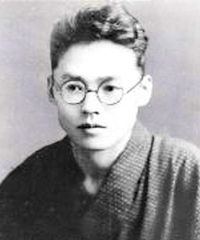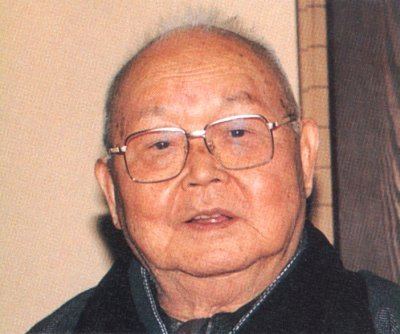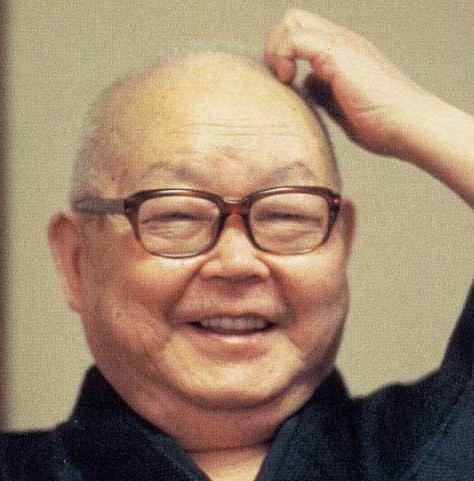Name Masuji Ibuse Role Author | Movies Black Rain | |
 | ||
Books Black Rain, Salamander and Other Stories, Kuroi ame =, Salamander, La salamandre Similar People Shohei Imamura, Tatsuo Nagai, Koda Rohan, Sei Ito, Yasunari Kawabata | ||
Book review black rain by masuji ibuse
Masuji Ibuse (井伏 鱒二, Ibuse Masuji, 15 February 1898 – 10 July 1993) was a Japanese author.
Contents
- Book review black rain by masuji ibuse
- LLUVIA NEGRA
- Life and work
- Adolescence
- Later career
- Selected works
- References

LLUVIA NEGRA
Life and work

Ibuse was born in 1898 to a landowning family in the village of Kamo which is now part of Fukuyama, Hiroshima.
At the age of 19 he started studying at Waseda University in Tokyo. He was at first interested in studying poetry and painting but was encouraged to study fiction and ended up specialising in French literature.
He was harassed sexually by a gay professor named Noburu Katagami, so he had to leave the university before graduation, but began publishing stories in the early 1920s.
He began to be recognised in the late 1920s when his work was favorably mentioned by some of Japan's top critics. He appeared on the literary scene with the publication of Salamander in 1929, and thereafter continued to write in a style characterized by a unique blend of humour and bitterness.
He was awarded the Naoki Prize for John Manjirou, the Cast-Away; his Life and Adventure and continued to publish works filled with warmth and kindliness, while at the same time showing his keen power of observation. The themes he employed were usually intellectual fantasies that used animal allegories, historical fiction, and the country life. During World War II he worked for the government as a propaganda writer.
Adolescence
Ibuse failed his entrance exam to Hiroshima middle school but in 1911 he gained admission to Fukuyama Middle School. Fukuyama Middle School was an elite academy and was linked to eminent scholars. Fukuyama's teachers boasted the school's pedigree but Ibuse did not care much for this. Ibuse speaks of this school as following Western ideals, according to The First Half of My Life he says the school emphasized Dutch learning and French military exercises.
Ibuse was made fun of at this school; he even went so far as to avoid wearing glasses in an effort to avoid being ridiculed.
Although Ibuse enjoyed the Western influences of his education, his grandfather arranged for a private tutorial in Chinese literature, however, this training came to a stop when Ibuse's tutor died. At his school, Ibuse had to often deal with rules that forbade students to read fictional literature; this prevented Ibuse from reading popular works during this period. However Ibuse managed to read works from Shimazaki Toson and Mori Ogai. In 1916, Ibuse even wrote a letter to Ogai with the pseudonym Kuchiki Sansuke. Ogai believed Sansuke was a famous scholar and sent a reply to Sansuke expressing his gratitude. While in middle school, Ibuse's brother Fumio submitted a poem to the Tokyo journal Shusai bundan using Ibuse's name. Ibuse was reprimanded by the principal of Fukuyama's school but he was also praised by receiving two fan letters. The reprimand Ibuse received influenced him to express an interest in the visual arts.
Ibuse studied the arts at Fukuyama Middle School; he enjoyed the classes but did not feel he wanted to commit his life to becoming an artist. Ibuse graduated from middle school in 1917; he wanted to continue his artist endeavours under the tutorship of established painter Hashimoto Kansetsu but this opportunity was denied by Kansetsu.
In 1917 at nineteen years of age, Ibuse started preparing to enter Waseda University; he was greatly influenced by his brother Fumio and by a friend of his Yamane Masakazu.
Ibuse moved to Tokyo and experienced a sense of inspiration from leaving the country (Fukuyama) and moving to the big city, Ibuse described this experience in Thoughts One February Ninth: "sometimes I feel that half of me wants to return to the country while the other half would like to cling to Tokyo until the very end."
Tokyo appeared surreal to Ibuse, he felt lonely and missed his Fukuyama home. Nevertheless, Ibuse decided to stay in a boardinghouse near Waseda University; he often moved but always staying near Waseda and visited Fukuyama only occasionally. In Tokyo, Ibuse befriended eccentric young men and literary hopefuls. During his stay at Waseda University, Ibuse witnessed political unrest and the expressed radicalism of university students. The political ideologies of the era did not appeal to Ibuse. In fact, he was dissatisfied with the consistent strikes and revolts.
At Waseda University Ibuse was greatly influenced by the works of Shakespeare and Bashō; he was also an avid reader of French fiction and poetry. Ibuse went so far as to pawn a watch to try to understand the necessities of writers.
In 1918 Ibuse met naturalist writer Iwano Homei. Homei's literature was appealing to Ibuse and would later influence some of Ibuse's literary works. Ibuse befriended student Aoki Nampachi in Waseda. Aoki was a mentor and a great influence on the writings of Ibuse. Aoki's influence can be found in "The Carp," where Ibuse idealizes Aoki's friendship and represents his feelings towards this friendship in a carp. Ibuse started writing his first essays in 1922, shortly after the death of Aoki. Ibuse often found inspiration in his loneliness and in his encounters with geisha. His first literary works were in the style of prose. He severed his ties with Waseda University and started writing for small magazines.
One of Ibuse's first contributions was for the magazine Seiki. It was originally written for Aoki in 1919 and titled "The Salamander." In 1923 it was renamed "Confinement."
Later career
Ibuse was known and appreciated for most of his career, although it wasn't until after the war that he became famous. In 1966 he published his novel Black Rain, which won him international acclaim and several awards, including the Noma Prize and the Order of Cultural Merit, the highest honor that can be bestowed upon a Japanese author. The novel draws its material from the bombing of Hiroshima and the title refers to the nuclear fallout. Ibuse was not present at the time of the bombing, but used the diaries of survivors to construct his narrative. An earlier story by Ibuse, Kakitsubata ("The Crazy Iris", first published in 1951), deals with similar themes.
